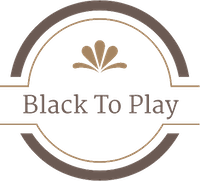Train of Thought, Part One
Reading in go is a complicated subject. To my knowledge, there is no common systematical method of reading that all go players use; and, when asked to define ‘reading’, I find myself hard-pressed for an answer. Since the subject is of interest to many – myself included! – in the following I attempt to explain why and how I ‘read’.
Reading has a clear and well-defined goal. When we say that a player ‘reads out’ a position, we seem to mean that they consider the possible courses of play that might follow, searching for the moves that benefit each player as much as possible. This does not mean a peaceful give-and-take – rather, at each step, both players try to maximise their result at the expense of their opponent.
When a player plays ‘without reading’, we assume that they are relying on their intuition, memory, and pattern-matching skills. The player’s mind might be going like: ‘I’ve seen this move in this shape before, and it maybe turned out well, so I might as well play it again’ – although probably no words are involved, just the stones imagined on the board.
In Japanese go teaching, it is emphasised that a player should have an articulable reason to each move that they play. When I started training as insei and had my games reviewed by professionals, they would at times ask me why I played a particular move; and if I couldn’t answer, they would scold me. Thinking about this now, I’m reminded of a dictum by Socrates: ‘The unexamined life is not worth living.’ If you play a blitz game without actually considering your choices, just playing the moves that your brain’s automatic move-generator spits out, what exactly can you learn from the game? Socrates along with the Japanese go teachers would probably say that playing go without thinking is not worth playing at all.
Go problems provide an interesting platform for practising reading. Traditionally, a go problem is a well-constrained position which has one clear ‘correct’ solution, a bit like a lock and a key – in other words, there is something in particular that the starting player should be able to achieve. The problem and its solution might concern the life and death of groups (tsumego), the shape of stones and groups (tesuji problems), or the optimisation of territory (endgame problems). A good problem only has one correct sequence and involves shapes that could appear in actual games, as then the problem and its solution sequence are also worth memorising.
The downside with go problems is that the solver knows that there is a solution, that there is something in particular to achieve in the position. In a real game you are never told to ‘capture this group in a kō’ or to ‘make good shape with these stones’ or to ‘optimise the territory here’ – you have to create your motivations for yourself. Therefore, even if you are good at solving problems you might not be able to utilise your skills in actual games. Another negative phenomenon is that it is possible to get stuck at ‘searching for the teacher’s password’ – that is, to search for sequences that look like the solution, but actually miss a surprising, strong resistance from the other player. Ideally, you should always be looking for the best moves for both players.
I think if we realise the potential issues with reading practice, described above, and learn to avoid them, we can learn to solve go problems in a way that also systematically reinforces our reading in actual games.
Continued in Part Two.
Events
All times are in Helsinki time (eet with summer time).
Check the current review credits balance
Public lectures on Twitch every 2nd and 4th Saturday of the month at 1 pm.
Jeff and Mikko stream on Twitch on Fridays at 6 pm.


